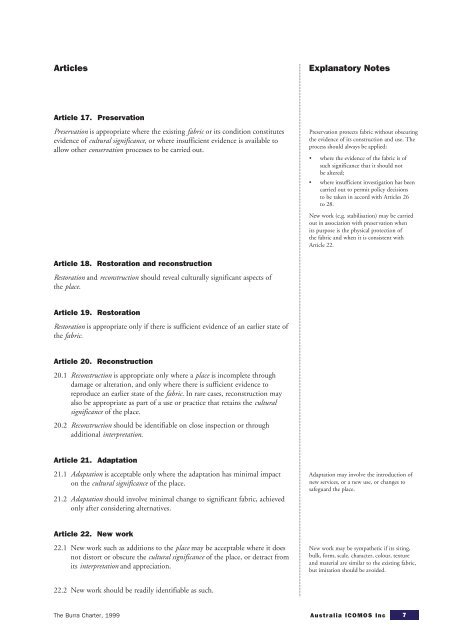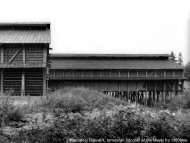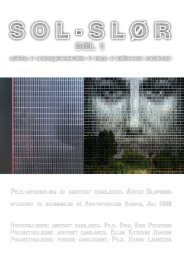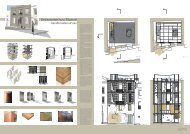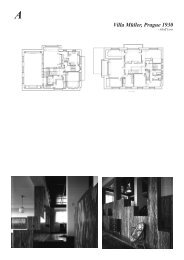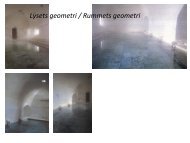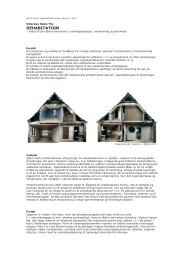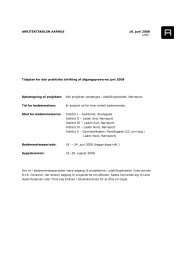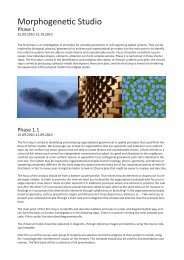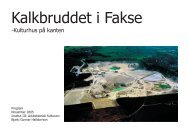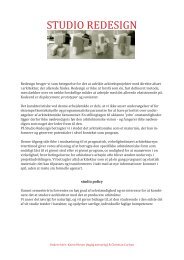The Australia ICOMOS Charter for Places of Cultural Significance 1 ...
The Australia ICOMOS Charter for Places of Cultural Significance 1 ...
The Australia ICOMOS Charter for Places of Cultural Significance 1 ...
Create successful ePaper yourself
Turn your PDF publications into a flip-book with our unique Google optimized e-Paper software.
Articles<br />
Explanatory Notes<br />
Article 17. Preservation<br />
Preservation is appropriate where the existing fabric or its condition constitutes<br />
evidence <strong>of</strong> cultural significance, or where insufficient evidence is available to<br />
allow other conservation processes to be carried out.<br />
Preservation protects fabric without obscuring<br />
the evidence <strong>of</strong> its construction and use. <strong>The</strong><br />
process should always be applied:<br />
• where the evidence <strong>of</strong> the fabric is <strong>of</strong><br />
such significance that it should not<br />
be altered;<br />
• where insufficient investigation has been<br />
carried out to permit policy decisions<br />
to be taken in accord with Articles 26<br />
to 28.<br />
New work (e.g. stabilisation) may be carried<br />
out in association with preservation when<br />
its purpose is the physical protection <strong>of</strong><br />
the fabric and when it is consistent with<br />
Article 22.<br />
Article 18. Restoration and reconstruction<br />
Restoration and reconstruction should reveal culturally significant aspects <strong>of</strong><br />
the place.<br />
Article 19. Restoration<br />
Restoration is appropriate only if there is sufficient evidence <strong>of</strong> an earlier state <strong>of</strong><br />
the fabric.<br />
Article 20. Reconstruction<br />
20.1 Reconstruction is appropriate only where a place is incomplete through<br />
damage or alteration, and only where there is sufficient evidence to<br />
reproduce an earlier state <strong>of</strong> the fabric. In rare cases, reconstruction may<br />
also be appropriate as part <strong>of</strong> a use or practice that retains the cultural<br />
significance <strong>of</strong> the place.<br />
20.2 Reconstruction should be identifiable on close inspection or through<br />
additional interpretation.<br />
Article 21. Adaptation<br />
21.1 Adaptation is acceptable only where the adaptation has minimal impact<br />
on the cultural significance <strong>of</strong> the place.<br />
21.2 Adaptation should involve minimal change to significant fabric, achieved<br />
only after considering alternatives.<br />
Adaptation may involve the introduction <strong>of</strong><br />
new services, or a new use, or changes to<br />
safeguard the place.<br />
Article 22. New work<br />
22.1 New work such as additions to the place may be acceptable where it does<br />
not distort or obscure the cultural significance <strong>of</strong> the place, or detract from<br />
its interpretation and appreciation.<br />
New work may be sympathetic if its siting,<br />
bulk, <strong>for</strong>m, scale, character, colour, texture<br />
and material are similar to the existing fabric,<br />
but imitation should be avoided.<br />
22.2 New work should be readily identifiable as such.<br />
<strong>The</strong> Burra <strong>Charter</strong>, 1999<br />
<strong>Australia</strong> <strong>ICOMOS</strong> I n c<br />
7


